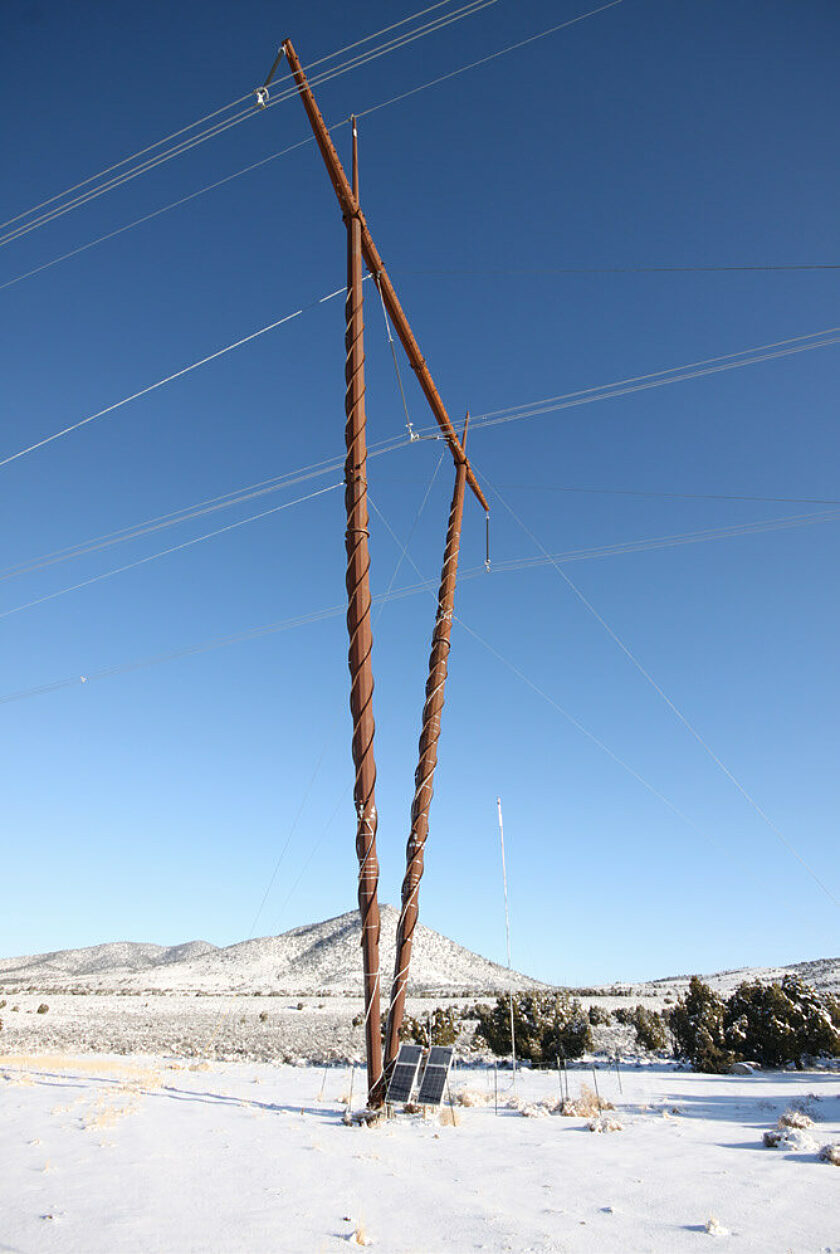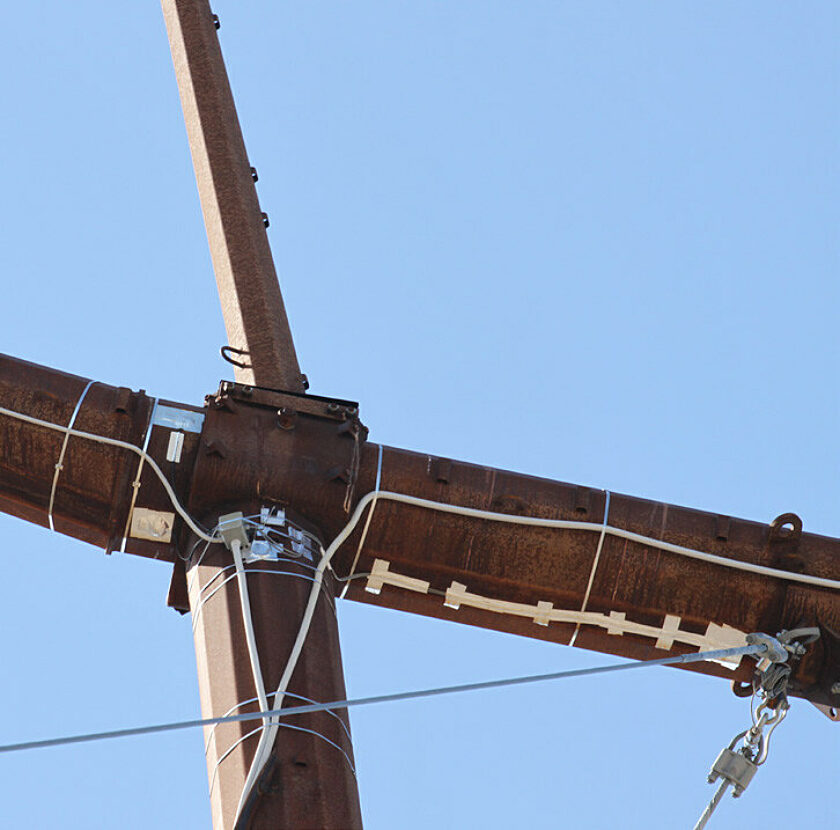Project Overview
The 235 mile (379 km) / 500 kV AC One Nevada Transmission Line connects renewable energy generation in northern Nevada to the city of Las Vegas. The One Nevada Line utilizes a new tubular guyed-V transmission tower design that features reduced environmental impact and more cost-effective construction than traditional towers.
Tubular transmission towers, like all tubular structures, are susceptible to wind-induced (or mechanical) vibration that can cause fatigue in structural materials.
This project monitors the One Nevada Line towers to ensure wind-induced vibration does not cause operational issues with the transmission line.
A Long-term Monitoring (LTM) team, including stakeholders and subcontractors, is involved in long-term monitoring of the tubular guyed-V towers.
How We Helped
In 2013, 11 tubular guyed-V towers were selected for long-term monitoring. The selection included suspension towers of varying heights (95-140 ft or 29-43m), towers situated in different locations along the line (the first and the last towers, and 9 others in between, and different line orientations (N-S or E-W).
Our role in the LTM team is to record real-time vibration data of the structure(s) under various wind conditions and over an extended period of time—up to 5 years. During the majority of the monitoring period, the line is energized to 500 kV.
The real-time vibration monitoring is divided into 3 phases:
- System Installation
- Verification of Installed Systems
- Data Collection and Maintenance
3 types of sensors were used for the long-term monitoring:
- Accelerometers, which respond to tower component acceleration. This is a measurement of the motion of the tower
- Strain Gauges, which respond to a change in strain in the components of the tower. This is a measurement that is proportional with the forces in the tower components
- Anemometer, which measures wind speed and direction
Each tower is instrumented with as many as 26 accelerometers and 36 strain gauges. One anemometer was installed on a separate 33 ft (10 m) tall mast beside each transmission tower. The information from the various sensors is recorded using a digitizer and then stored on a field computer.
Due to the remote locations there is no distribution service (i.e. 120 VAC power) or communication service available. The systems have to run on batteries charged by solar panels, and utilize a wireless communication service. External interference such as electrical noise (i.e. energized transmission line) and voltage surges (i.e. lightning) are carefully filtered and suppressed to prevent damage to the monitoring system, or corruption of data.
The monitoring systems are verified by performing a load-and-release test (i.e. pluck test) on each of the instrumented towers. Each leg of the guyed-V tower is pluck tested in two directions to verify that the monitoring system is working properly. Quarterly maintenance trips ensure the monitoring systems remain functional in the harsh desert / mountain environment over the project duration (up to 5 years).
The collected data is transmitted wirelessly to our facility in Toronto, Canada. The data is then processed and filtered before being sent to other members of the LTM team for further analysis and reporting. The 11 structures are monitored daily for high winds and unexpected vibrations. Any notable events are reported to the LTM team for further investigation.
Practical Client Benefits
Our experience in developing systems for real-time field vibration monitoring allows the LTM team to accurately assess the vibration stresses and loading on a structure due to wind. This data can be used effectively to support confidence in the safety and reliability of the One Nevada structures for years to come.





